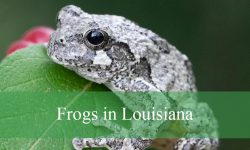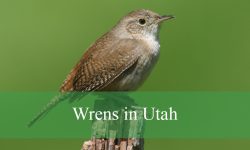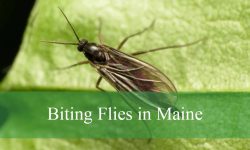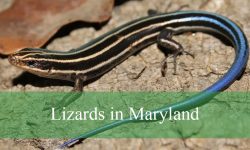North Carolina’s warm, humid climate creates an ideal environment for a wide variety of insects and arachnids. While many are harmless and even beneficial to the ecosystem, the state is also home to several species that can pose real threats to humans and pets. From venomous spiders to blood-feeding parasites, understanding which bugs to watch out for is key to staying safe outdoors and indoors.
Encounters with dangerous bugs can lead to painful bites, allergic reactions, or even serious illnesses if left untreated. Some species, like the Black Widow and Brown Recluse Spiders, inject venom that affects the nervous system or causes tissue damage, while others, such as Deer Flies and Fleas, can spread infectious diseases. Knowing where these pests live and how they behave can help you prevent unpleasant surprises.
Whether you live in the coastal plains, mountain regions, or urban areas of North Carolina, awareness and prevention are your best defenses. This guide explores the most dangerous bugs in the state, how to identify them, and what steps to take if you encounter one.
Types of Dangerous Bugs in North Carolina
Black Widow Spider (Latrodectus mactans)
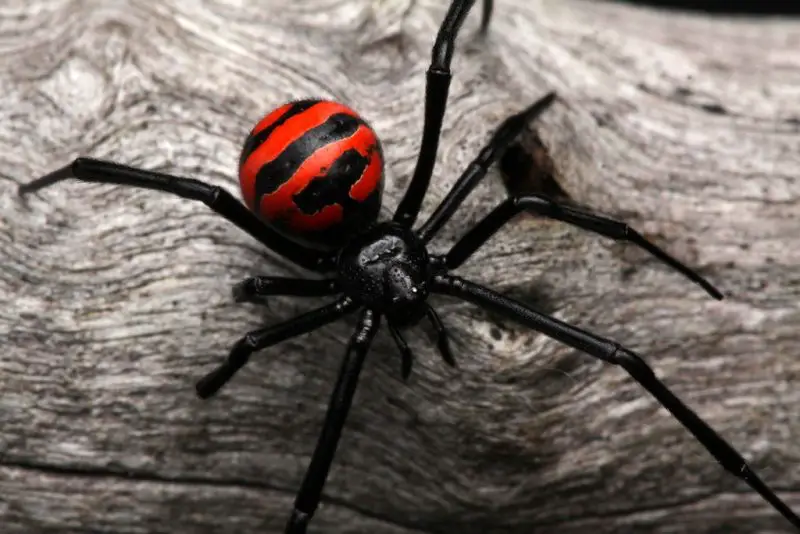
The Black Widow Spider is one of the most feared arachnids in North Carolina due to its potent venom and distinctive appearance. This glossy black spider is easily identified by the red hourglass marking on the underside of its abdomen. Females are larger and more dangerous than males, typically reaching about 1.5 inches with their legs extended. They tend to build irregular, tangled webs in dark, secluded areas such as basements, garages, and woodpiles.
Despite their intimidating reputation, black widows are not naturally aggressive toward humans. They usually bite only when provoked, trapped, or disturbed. The bite itself may feel like a pinprick at first but can lead to intense pain, muscle spasms, nausea, sweating, and even breathing difficulties in severe cases. The venom targets the nervous system, which is why medical attention is strongly advised after a confirmed bite.
In North Carolina, black widows are common in rural and suburban environments, especially where clutter or debris offers shelter. They prefer warm and dry locations, which makes them active from spring through late fall. Homeowners may notice their irregular webs near outdoor furniture, under rocks, or around sheds.
To prevent black widow infestations, it’s best to reduce clutter and seal gaps around doors, windows, and foundations. Wearing gloves when handling wood or outdoor equipment can also minimize the risk of an accidental bite. Keeping the perimeter of the home clear of debris and checking seldom-used items regularly can significantly reduce encounters.
While a black widow bite can cause intense symptoms, fatalities are extremely rare with modern medical care. Antivenom and supportive treatments are available, and most individuals recover completely within a few days. Awareness and caution remain the most effective forms of protection against this notorious spider.
Brown Recluse Spider (Loxosceles reclusa)
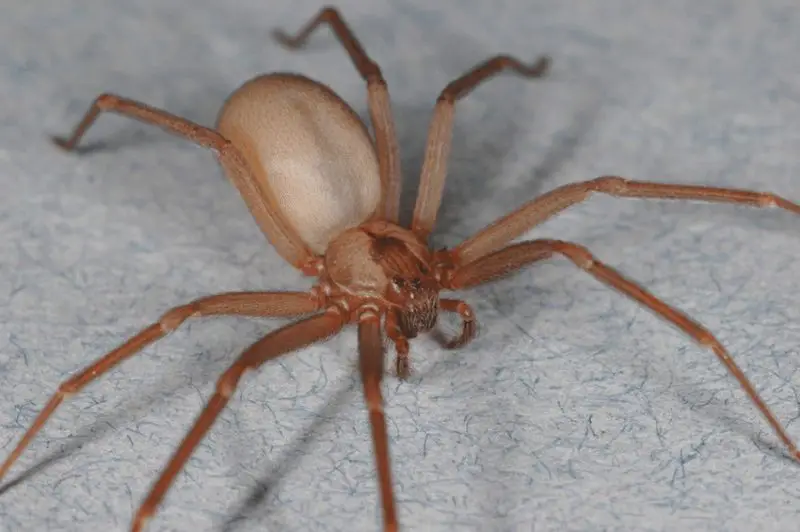
The Brown Recluse Spider is another venomous species occasionally found in North Carolina, though it is less common than in the central United States. It can be identified by its light brown color and the distinctive violin-shaped marking on its back. Adult brown recluses measure between ¼ to ½ inch long, with long, thin legs covered in fine hairs. Unlike most spiders, they have six eyes arranged in pairs rather than eight.
This spider prefers quiet, undisturbed locations such as attics, closets, and under furniture. Outdoors, they can be found beneath rocks, logs, or debris. Brown recluses are nocturnal hunters, feeding on small insects and other spiders at night. Their reclusive nature means bites occur mainly when humans accidentally disturb their hiding spots, often while dressing or moving stored items.
The bite of a brown recluse is serious and can result in necrotic skin lesions. Initially, the bite may go unnoticed, but within hours, redness, blistering, and tissue destruction may occur. Some bites lead to large ulcers requiring weeks or even months to heal. In rare cases, systemic symptoms like fever, fatigue, or nausea can develop, particularly in sensitive individuals.
Preventing contact with brown recluses involves sealing cracks, using sticky traps, and maintaining cleanliness in storage areas. Clothing and shoes left unused for long periods should be shaken out before wearing. When cleaning out dark spaces, wearing gloves and long sleeves provides additional protection.
Although alarming, brown recluse bites are not usually fatal. Medical treatment focuses on controlling infection and promoting healing. Early medical intervention significantly reduces the risk of severe complications, so any suspicious bite should be promptly examined by a healthcare professional.
Yellowjacket (Vespula spp.)
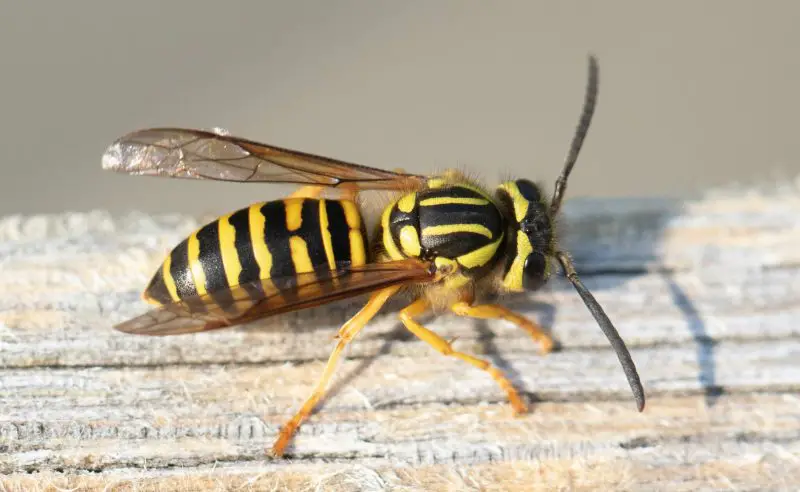
Yellowjackets are one of North Carolina’s most aggressive stinging insects. These wasps are easily recognized by their bright yellow and black coloration and their rapid, darting flight patterns. They live in large colonies, often nesting underground or in hollow spaces within walls, attics, or trees. Each colony can contain thousands of workers, making them formidable when disturbed.
Unlike bees, yellowjackets can sting multiple times without dying. Their stings deliver venom that causes sharp, burning pain, redness, and swelling. For most people, the reaction is temporary, but those allergic to wasp venom can experience severe symptoms such as anaphylaxis, which requires immediate emergency care. Even non-allergic individuals can be stung dozens of times during a swarm attack.
During late summer and early fall, yellowjackets become particularly aggressive as food sources dwindle. They are strongly attracted to sugary drinks, meats, and garbage, which makes picnics and outdoor gatherings a prime target zone for these insects. Their defensive behavior is triggered easily, especially if someone approaches or disturbs their nest.
To reduce encounters, it’s important to cover trash bins, clean up spills, and avoid wearing strong fragrances outdoors. If a nest is found near human activity areas, it’s best to call a professional pest control service. Attempting to destroy a yellowjacket nest without proper equipment can result in multiple stings.
Despite their aggression, yellowjackets play a valuable ecological role by controlling other insect populations. However, their stings can be extremely painful and dangerous to sensitive individuals, making awareness and avoidance crucial for outdoor safety in North Carolina.
Paper Wasp (Polistes spp.)
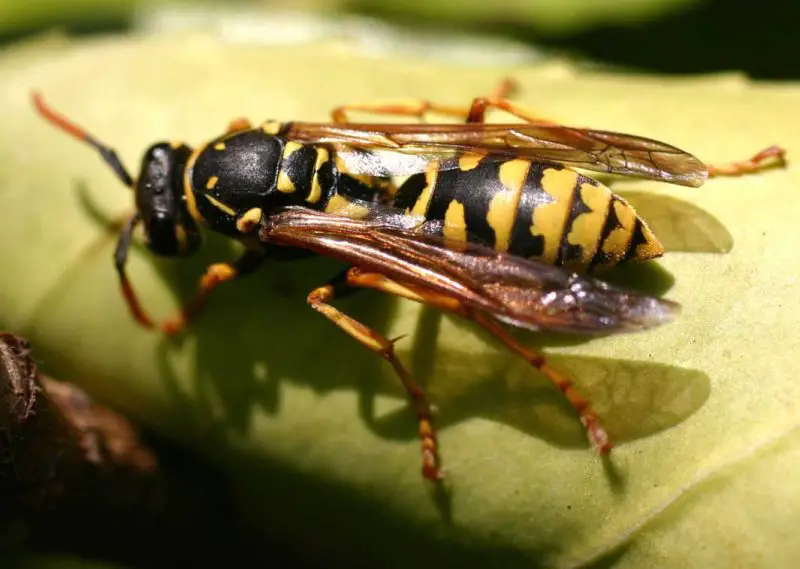
Paper wasps are slender, long-legged insects known for their distinctive umbrella-shaped nests made from chewed wood fibers mixed with saliva. They are usually reddish-brown or black with yellow markings, making them easy to confuse with yellowjackets. Found throughout North Carolina, these wasps often build nests under eaves, porch ceilings, or tree branches.
While not as aggressive as yellowjackets, paper wasps will defend their nests vigorously if they feel threatened. Their sting delivers venom that causes sharp pain, itching, and swelling. For individuals allergic to wasp venom, even a single sting can cause a severe reaction. They can sting multiple times and are capable of chasing perceived threats over short distances.
Paper wasps are beneficial predators, feeding on caterpillars, flies, and other pest insects. They are active during the warmer months, with colonies dying off in winter except for the fertilized queens, who overwinter to start new nests in spring. This behavior leads to frequent nesting around homes and outdoor structures each year.
To prevent infestations, inspect potential nesting sites early in the spring and remove small nests before they grow. Avoid swatting or making sudden movements near wasps, as this can provoke an attack. Keeping outdoor lights dim at night and securing food or drinks during outdoor activities can also minimize attraction.
Despite their defensive nature, paper wasps contribute positively to the ecosystem by reducing garden pests. Respecting their space and managing nests responsibly allows coexistence without unnecessary risk to humans or pets.
Hornets (Bald-Faced Hornet – Dolichovespula maculata)
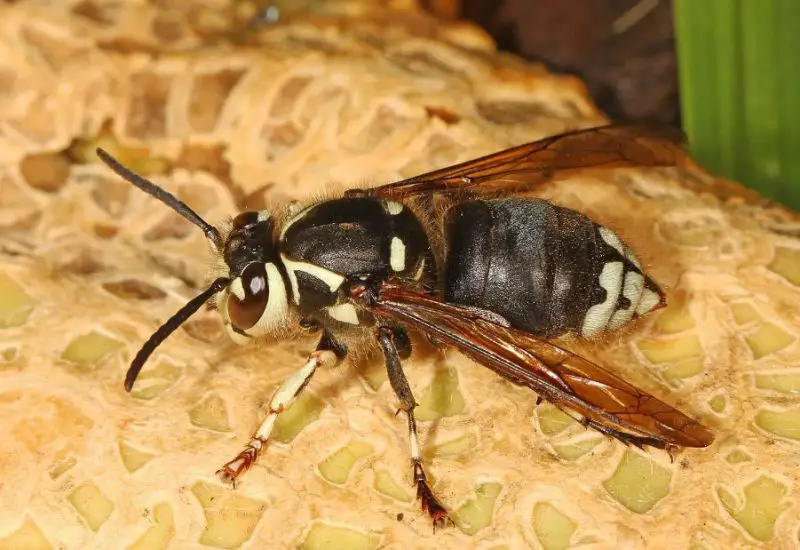
The Bald-Faced Hornet, a relative of the yellowjacket, is one of North Carolina’s largest and most intimidating wasps. It is distinguished by its black body with white markings on the face and thorax. These hornets build large, spherical paper nests—sometimes the size of a basketball—usually hanging from tree branches, shrubs, or building eaves.
Hornets are territorial and will aggressively defend their nests if disturbed. Their stings are very painful due to both venom toxicity and the ability to sting repeatedly. While most stings cause temporary swelling and redness, allergic reactions can be severe and life-threatening. Multiple stings are particularly dangerous to children and individuals with known sensitivities.
These insects are most active during the late summer months, when colonies reach their peak population. Bald-faced hornets are predators that feed on flies, caterpillars, and other insects, making them beneficial in controlling pest species. However, their defensive nature makes them a serious concern when nesting near human dwellings or public spaces.
Removing a hornet nest should always be done by professionals equipped with protective gear. Attempting to spray or knock down a nest can provoke an immediate swarm attack. Keeping food covered and trash sealed outdoors helps reduce attraction.
Although feared for their aggression, bald-faced hornets play an important ecological role. By managing them carefully and avoiding disturbance, North Carolinians can minimize risks while benefiting from the natural pest control these wasps provide.
Fire Ant (Solenopsis invicta)
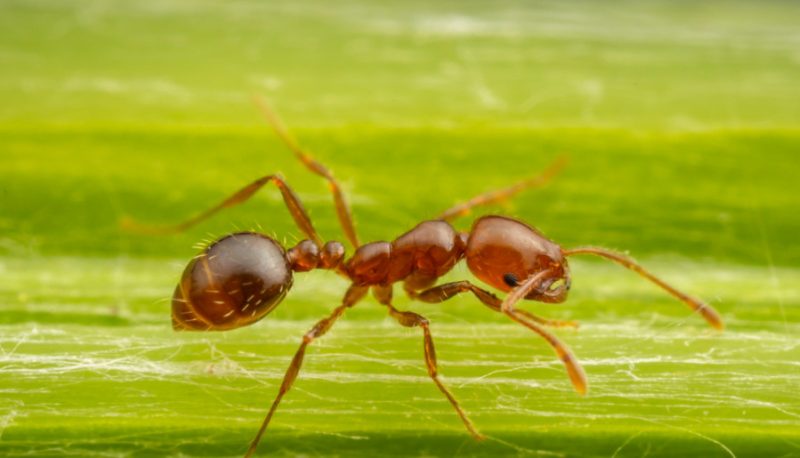
Fire ants are one of the most aggressive and painful stinging insects in North Carolina. These reddish-brown ants form large mounds in lawns, gardens, and fields, often measuring over a foot in diameter. When their mound is disturbed, hundreds of workers emerge instantly, attacking in coordinated swarms. Each ant can sting multiple times, injecting venom that causes a burning sensation—hence the name “fire” ant.
The sting produces small, white pustules or blisters that can itch and become infected if scratched. For most people, the reaction is localized, but in sensitive individuals, fire ant venom can trigger life-threatening anaphylaxis. Children and pets are especially at risk due to their smaller body size and curiosity near infested soil.
Fire ants thrive in warm, sunny areas with moist soil, especially in suburban lawns and agricultural lands. They are most active during spring and summer when colonies expand rapidly. Their nests are often built near sidewalks, gardens, and even electrical equipment, where they can cause costly damage.
Managing fire ants requires a combination of baiting and mound treatments. Professional pest control is often necessary for large infestations. To avoid encounters, it’s best to watch for soil mounds and wear closed shoes when walking through grassy or disturbed areas.
Although invasive and dangerous, fire ants play a limited ecological role by preying on ticks and larvae of other pests. Still, their painful stings and aggressive nature make them one of North Carolina’s most problematic insects, both medically and environmentally.
Mosquitoes (Aedes and Culex species)
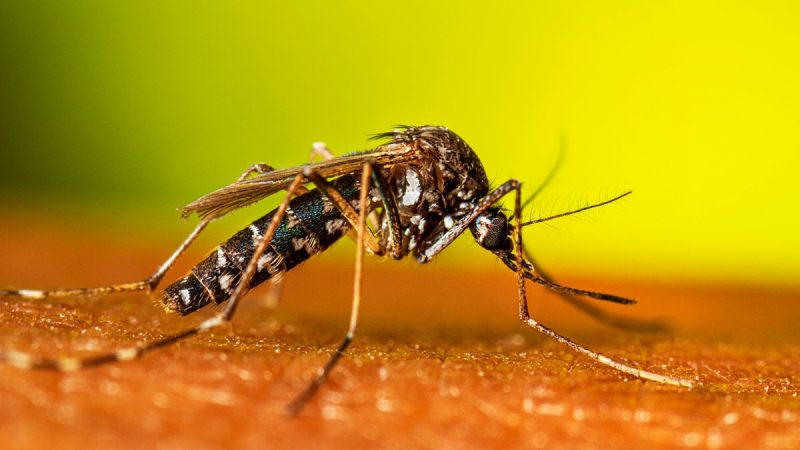
Mosquitoes are small but dangerous insects that pose serious health risks in North Carolina. The most common species include Aedes aegypti, Aedes albopictus, and Culex pipiens, all capable of transmitting diseases. These pests thrive in warm, humid environments and are particularly abundant from late spring through early fall.
Female mosquitoes feed on blood to develop their eggs, while males feed on nectar. Their bites leave itchy, red welts that can become infected from scratching. However, the true danger lies in their ability to transmit diseases such as West Nile virus, Eastern equine encephalitis, and La Crosse encephalitis. In some rare cases, mosquito-borne illnesses can cause neurological damage or death.
Mosquitoes breed in standing water, such as puddles, flowerpots, gutters, or birdbaths. Even a small amount of stagnant water can support larvae development. Urban areas with poor drainage or unmanaged yards often see higher populations during the summer.
Prevention is focused on eliminating breeding grounds. Emptying standing water, maintaining pools, and using mosquito repellents containing DEET or picaridin are effective strategies. Installing window screens and wearing light-colored clothing also help reduce bites.
Because of their ability to spread disease and disrupt outdoor life, mosquitoes are among the most dangerous and persistent pests in North Carolina. Public health programs and individual prevention play crucial roles in keeping their numbers under control each year.
Ticks (Ixodes scapularis and Amblyomma americanum)
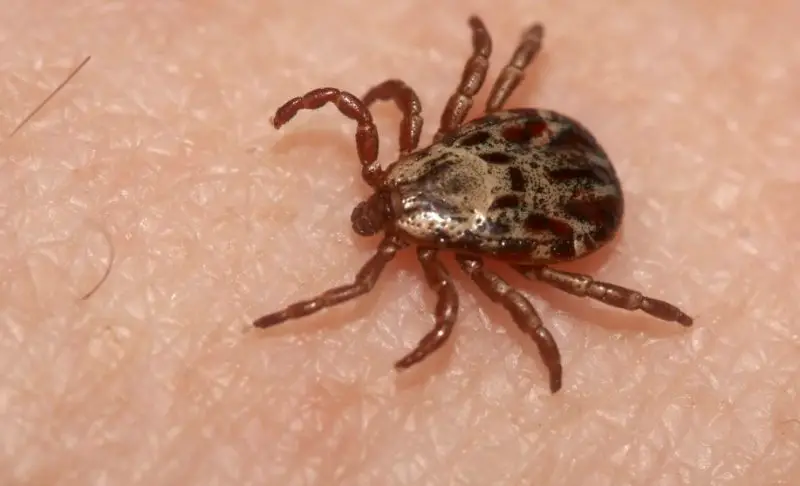
Ticks are blood-feeding arachnids that pose serious health concerns in North Carolina. The most common species include the Black-Legged Tick (deer tick) and the Lone Star Tick. These small, flat-bodied parasites attach to humans and animals, feeding for several days before dropping off. They are active throughout the year but peak in spring and early summer.
The Black-Legged Tick is notorious for transmitting Lyme disease, which causes fatigue, joint pain, and the characteristic bull’s-eye rash. The Lone Star Tick can spread Ehrlichiosis and is linked to alpha-gal syndrome, a meat allergy triggered by tick bites. In addition to these diseases, tick bites can cause irritation, itching, and local infection if not properly removed.
Ticks live in wooded areas, tall grasses, and along hiking trails. They cling to vegetation and wait for a passing host to brush by. Pets, particularly dogs, are common carriers, bringing ticks into homes where they can later attach to humans.
Prevention includes wearing long sleeves, tucking pants into socks, and using repellents containing permethrin or DEET when in tick-prone areas. After spending time outdoors, it’s essential to check the body for ticks and remove them promptly with fine-tipped tweezers.
Ticks are silent but dangerous parasites that can transmit life-changing diseases. With proper precautions and awareness, the risk of infection can be greatly reduced for both people and pets in North Carolina.
Assassin Bug (Kissing Bug – Triatoma sanguisuga)
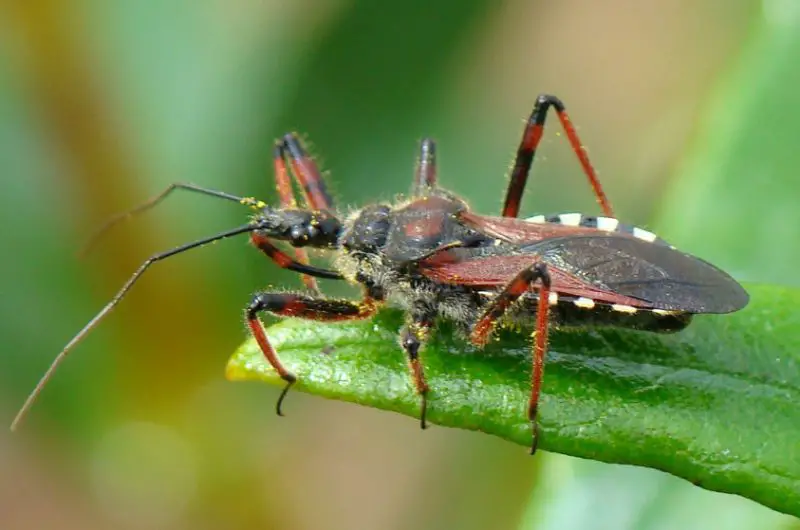
The Kissing Bug, a member of the assassin bug family, has become increasingly concerning in the southern United States, including North Carolina. These bugs are dark brown or black with orange or red markings along the edges of their bodies. They earned the name “kissing bug” because they often bite humans near the mouth or eyes while they sleep.
Although their bites are usually painless, kissing bugs can transmit Trypanosoma cruzi, the parasite responsible for Chagas disease. The disease may cause flu-like symptoms at first but can lead to severe cardiac or digestive complications years later if untreated. Not every bug carries the parasite, but infection risk increases in rural and wooded environments.
Kissing bugs are nocturnal and attracted to light, often entering homes through open windows or cracks. They hide during the day in walls, roofs, or pet bedding. Their presence is most common in rural North Carolina, where wildlife hosts such as raccoons and opossums are abundant.
To prevent infestations, sealing gaps in walls and installing fine-mesh screens on windows and doors is essential. Keeping outdoor lights away from entry points and reducing clutter near sleeping areas can also deter these insects. Pets should be checked regularly, as they can attract and harbor the bugs indoors.
While rare, confirmed cases of Chagas disease highlight the importance of awareness. Kissing bugs are not only a nuisance but also a potential public health threat in the region, requiring careful prevention and prompt medical evaluation after suspected bites.
Velvet Ant (Cow Killer – Dasymutilla occidentalis)
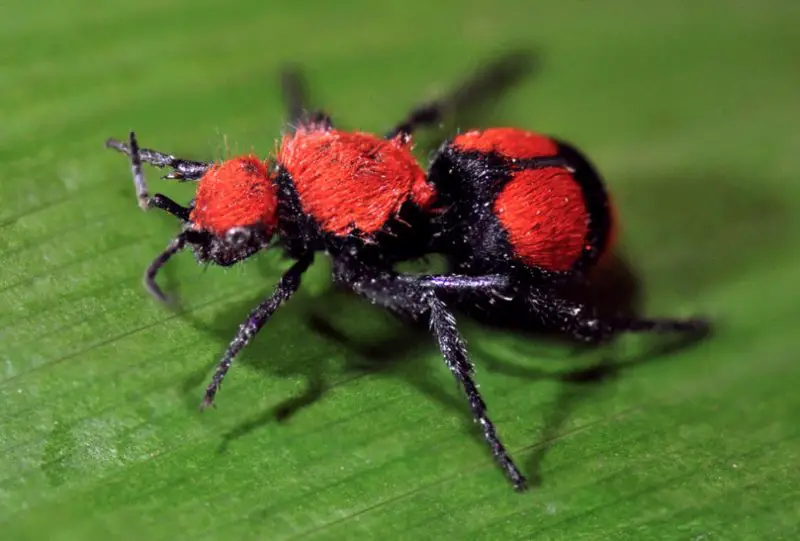
Despite its name, the Velvet Ant is not a true ant but a species of wingless wasp. Found throughout North Carolina, it is recognized by its striking red-orange and black, velvety appearance. Females, which are wingless, are known for delivering one of the most painful stings in the insect world—earning the nickname “cow killer.”
Velvet ants are solitary insects and are usually seen crawling rapidly on the ground in sandy or open areas. They are not aggressive and will only sting if handled or threatened. Their sting, however, produces immediate, intense pain and can last for several minutes. Fortunately, the venom is not lethal to humans, though it can cause swelling and allergic reactions.
These wasps lay their eggs in the nests of ground-dwelling bees and wasps. Once hatched, the larvae feed on the host’s developing pupae. Because of this parasitic lifestyle, velvet ants are beneficial in controlling other insect populations. Males have wings and do not sting but can sometimes be mistaken for different wasp species.
To avoid stings, it’s best not to touch or trap these insects when encountered outdoors. Wearing closed shoes and being cautious while walking through sandy paths or grassy areas helps reduce the chance of accidental contact. They are often most active on hot, sunny days in mid-summer.
Although fearsome in appearance and reputation, velvet ants are more of a painful nuisance than a true danger. Their brilliant coloration serves as a warning to potential predators—and to humans—to stay clear of their formidable sting.
Blister Beetle (Epicauta spp.)
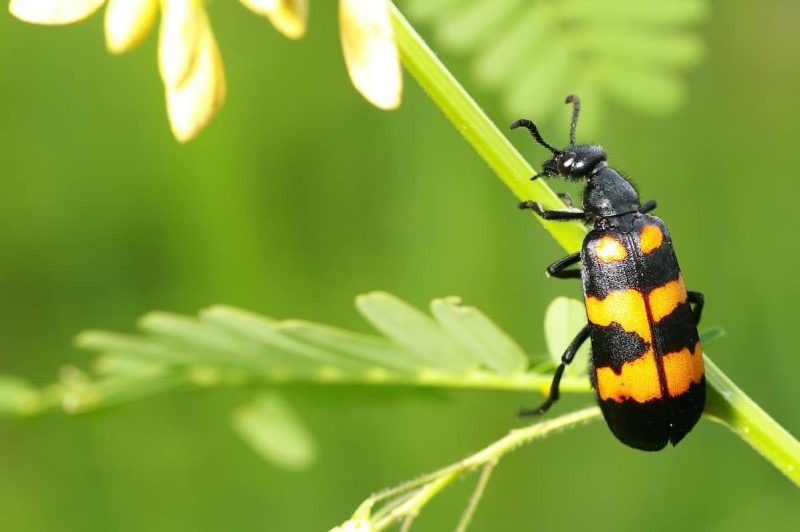
Blister beetles are slender, soft-bodied insects that can be found across North Carolina’s fields, gardens, and meadows. These beetles vary in color from gray and black to bright metallic hues of blue or orange, depending on the species. While they may look harmless, blister beetles possess a potent defensive chemical called cantharidin, which can cause painful skin blisters on contact.
When crushed or handled, the beetle releases cantharidin, which burns and irritates human skin. Even small amounts can cause inflammation and painful welts that take days to heal. This chemical is also toxic if ingested, posing a significant risk to livestock—especially horses—that accidentally eat hay contaminated with crushed beetles.
Blister beetles feed on flowering plants such as alfalfa, clover, and other crops, making them common in agricultural regions. Adults are most active in late summer, feeding on leaves and pollen. Their larvae, however, are beneficial because they prey on grasshopper eggs, helping control pest populations.
To avoid contact, gardeners and farmers should wear gloves when handling vegetation. Inspecting hay before feeding livestock is essential to prevent cantharidin poisoning. Even though blister beetles play a minor ecological role in pest management, their chemical defense mechanism makes them one of the more hazardous insects in the state.
While their blisters are painful, they rarely cause long-term harm to humans. However, understanding their appearance and behavior is vital for those who work closely with crops or spend time outdoors in North Carolina’s rural areas.
Wheel Bug (Arilus cristatus)
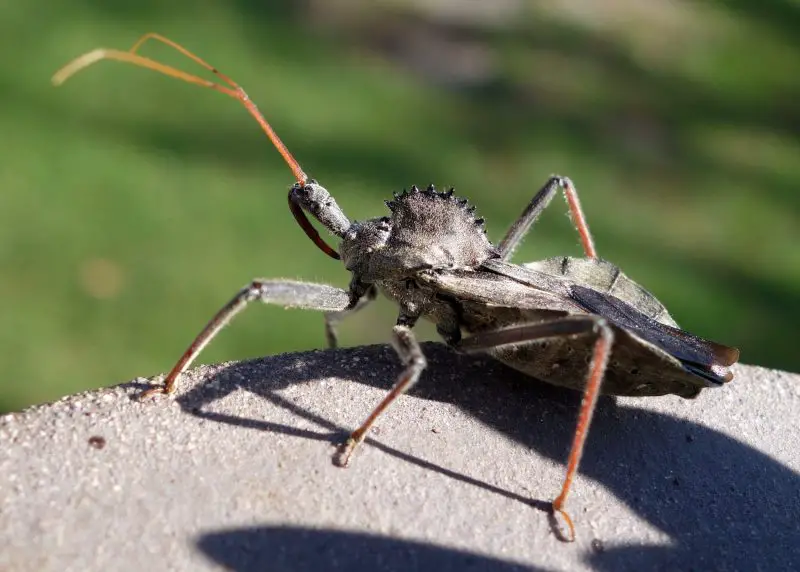
The Wheel Bug is one of the largest and most distinctive assassin bugs found in North Carolina. Measuring up to 1.5 inches in length, it has a grayish-brown body with a prominent, spiky wheel-like crest on its thorax, giving it a prehistoric look. Despite its beneficial role in controlling garden pests, the Wheel Bug delivers one of the most painful bites of any insect in the state.
These ambush predators feed on caterpillars, beetles, and other insects by piercing their prey with a sharp beak and injecting digestive enzymes that liquefy the victim’s tissues. Unfortunately, the same mechanism can inflict an extremely painful wound on humans if the bug is handled or provoked. The bite causes intense burning pain, swelling, and sometimes numbness lasting several days.
Wheel Bugs are typically shy and slow-moving, often found in gardens, shrubs, and wooded areas. They are most active from late summer to early fall when adult populations peak. Their cryptic coloration helps them blend into bark and foliage, making accidental contact more likely during outdoor activities.
To avoid bites, it’s best to observe Wheel Bugs from a distance and never attempt to pick them up. They are not aggressive and only bite in self-defense. Gardeners should handle plants carefully when these insects are present, as they play an important role in natural pest control.
Despite their painful defense, Wheel Bugs are beneficial allies against many destructive pests. Their presence indicates a healthy ecosystem, and with caution, humans and these remarkable insects can coexist safely.
Carpenter Bee (Xylocopa virginica)
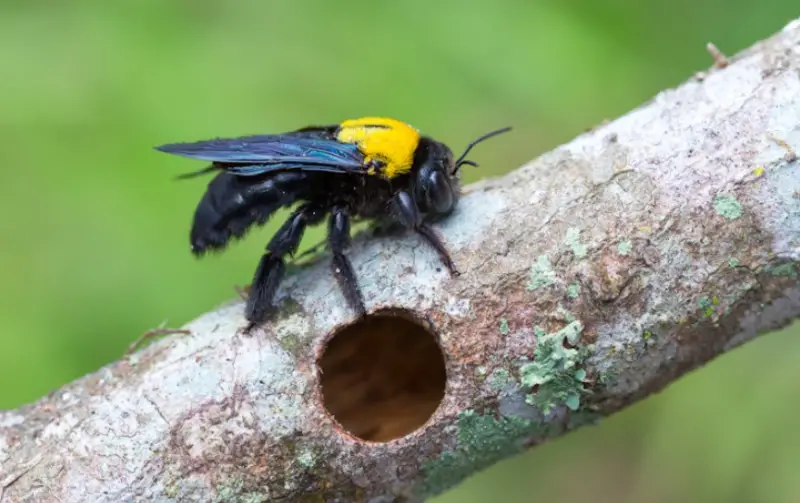
Carpenter bees are large, robust insects resembling bumblebees but with shiny, hairless abdomens. Common throughout North Carolina, they are frequently seen buzzing around decks, porches, and wooden structures in spring and summer. While males can appear aggressive, hovering close to people, they are harmless because they cannot sting. Females, however, can sting if provoked or handled.
Unlike social bees, carpenter bees are solitary nesters. Females bore perfectly round holes into untreated wood, creating tunnels where they lay eggs and store pollen for their larvae. Over time, multiple generations can reuse the same site, leading to extensive structural damage to homes, fences, and outdoor furniture.
Their sting is rarely dangerous to humans but can be painful. The main issue with carpenter bees is the property damage caused by repeated nesting activity. In addition, woodpeckers are often attracted to infested areas, compounding the destruction by digging into wood to reach the larvae.
Preventing carpenter bee activity involves sealing old holes, painting or treating exposed wood, and using hardwood materials less prone to tunneling. Traps and decoy blocks can help redirect nesting behavior away from buildings. Professional pest control may be required for severe infestations.
Carpenter bees are valuable pollinators despite their nuisance behavior. By balancing protective measures with ecological awareness, homeowners can safeguard their property while supporting the important role these bees play in North Carolina’s environment.
European Hornet (Vespa crabro)
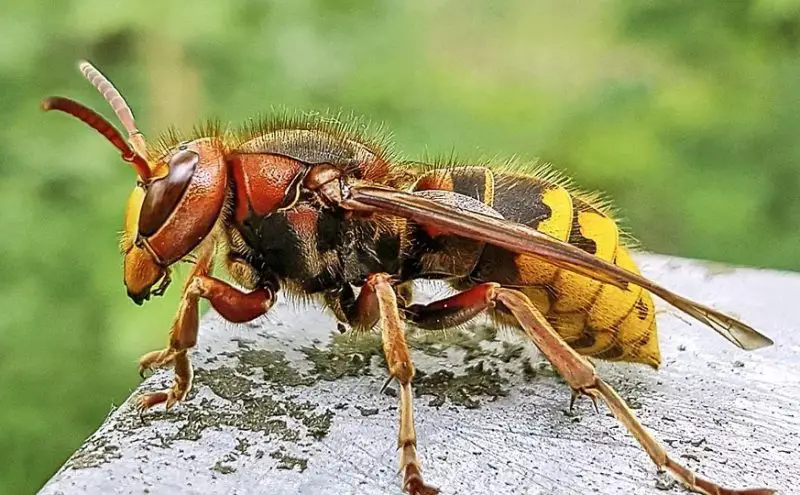
The European Hornet is one of the largest and most intimidating stinging insects in North Carolina. Measuring up to 1.5 inches long, these hornets have brown and yellow striped bodies with translucent wings. Unlike most wasps, they can fly at night and are attracted to lights, which often brings them near homes and porches.
European hornets are social insects that build large paper nests in hollow trees, attics, and wall voids. Their colonies can contain hundreds of workers, all capable of delivering painful stings. Although generally non-aggressive, they defend their nests fiercely, and multiple stings can cause significant pain, swelling, and, in allergic individuals, severe reactions.
They are beneficial predators that feed on other insects like flies, bees, and grasshoppers. However, they also damage plants and trees by stripping bark to collect sap. This dual behavior—both helpful and harmful—makes them a challenging insect to manage near human dwellings.
If a nest is discovered, it should never be disturbed without professional help. Attempting to spray or knock it down may provoke an immediate attack. Keeping lights dim at night and sealing small openings around homes can reduce the likelihood of hornets entering living spaces.
Despite their fearsome reputation, European hornets contribute to natural pest control. Respecting their nesting areas and seeking safe removal methods ensures coexistence without unnecessary danger to humans or pets.
Horse Fly (Tabanus spp.)
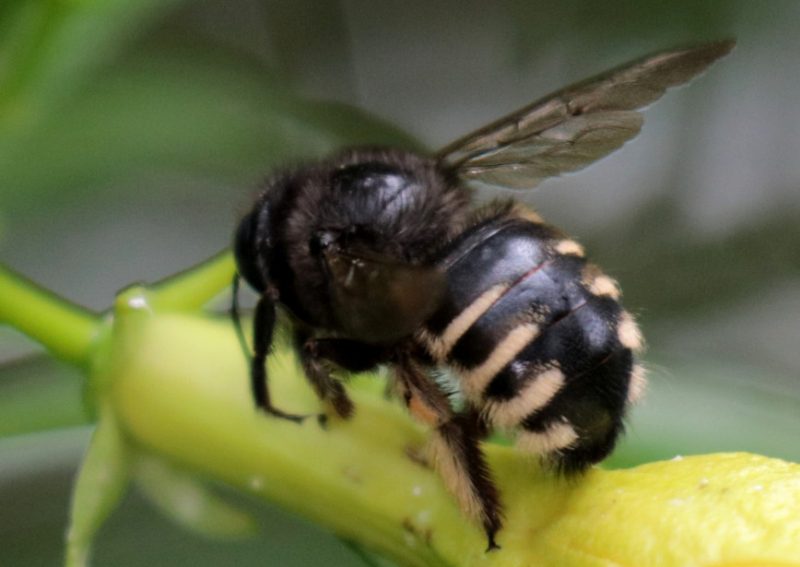
Horse flies are large, fast-flying insects that plague both humans and animals during North Carolina’s warmer months. Females are particularly notorious for their painful bites, as they feed on blood to nourish their eggs. Their sharp mouthparts slice through skin rather than pierce it, causing immediate pain and bleeding.
A horse fly bite results in swelling, redness, and itching that can persist for days. In some cases, secondary infections may develop due to bacteria entering the wound. These flies are persistent and difficult to swat away, often circling their targets repeatedly before landing. Livestock such as horses and cattle suffer greatly from their bites, leading to stress, blood loss, and reduced productivity.
Horse flies thrive in humid environments near water sources like ponds, streams, and marshes. They are most active during hot, sunny days in midsummer. Their larvae develop in moist soil or decaying vegetation, feeding on organic material until they mature into adults.
To protect against bites, wearing long sleeves, using insect repellents, and avoiding brightly colored or dark clothing can help reduce attraction. Animals can be shielded with protective fly sheets and sprays. Unfortunately, complete elimination is difficult due to their wide breeding range.
While horse flies are primarily a nuisance rather than a disease threat, their aggressive biting behavior and persistence make them one of the most troublesome insects in North Carolina. Awareness and preventive strategies are essential for enjoying outdoor activities during peak fly season.
Deer Flies (Chrysops spp.)
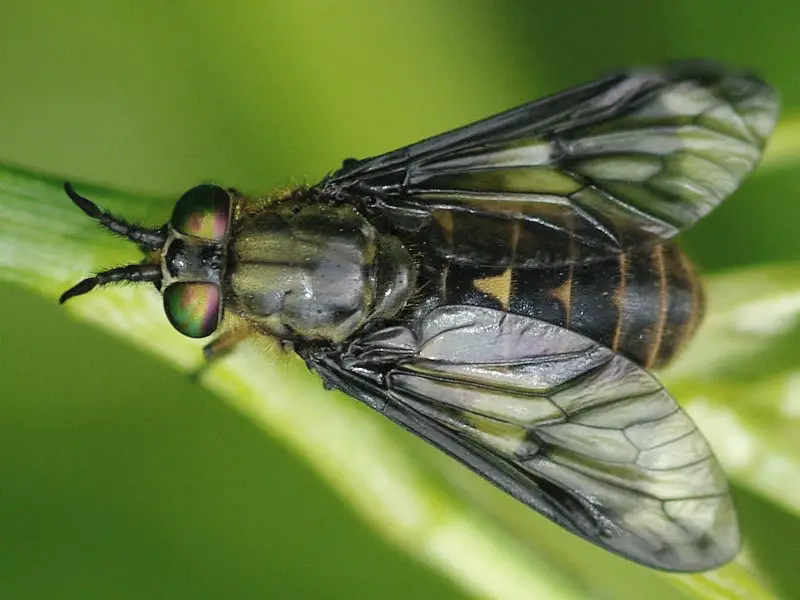
Deer Flies are small, aggressive biting insects commonly found across North Carolina, especially in wooded and humid areas near lakes and rivers. They are easily recognized by their bright, patterned eyes and clear wings with dark bands. Deer Flies are active during daylight hours and are most abundant in late spring and summer.
These flies bite painfully, using scissor-like mouthparts that tear the skin to feed on blood. Their bites often result in red, itchy welts and swelling, and in some cases, secondary infections may occur if the wounds are scratched. Deer Flies are persistent feeders, often circling around their hosts until they find an opportunity to bite.
One of the major health concerns associated with Deer Flies is their ability to transmit tularemia, a bacterial infection that can cause fever, skin ulcers, and swollen lymph nodes. Although cases are rare, the disease can be serious without treatment.
Preventing Deer Fly bites involves wearing long sleeves, using insect repellent with DEET, and avoiding heavily infested areas during peak activity hours. Light-colored clothing can also make you less attractive to these insects.
In North Carolina, Deer Flies are particularly common in rural areas, near forests, and around bodies of water. Their populations thrive in warm, moist conditions, making summer months the most challenging time for outdoor activities.
Fleas (Siphonaptera spp.)
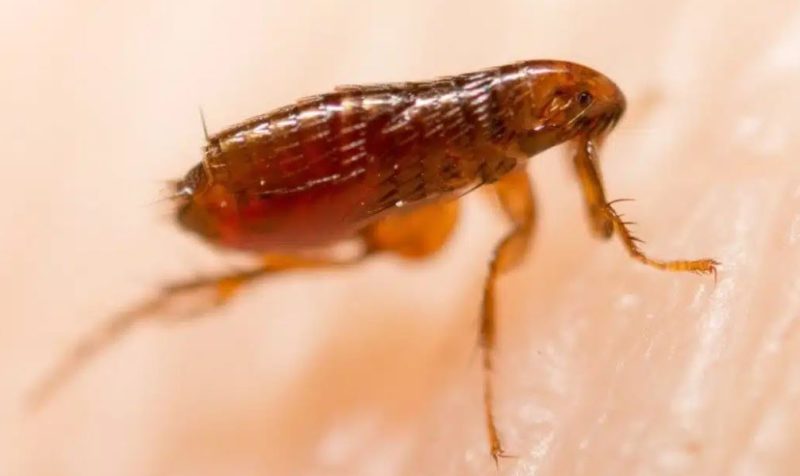
Fleas are tiny, wingless parasites that feed on the blood of mammals and birds. In North Carolina, they are a year-round nuisance, particularly in homes with pets. Adult fleas are reddish-brown, about 1/8 inch long, and capable of jumping several inches, allowing them to move easily between hosts and environments.
Their bites cause intense itching, redness, and irritation, often appearing in clusters around the ankles or legs. Some individuals may develop allergic reactions to flea saliva, leading to more severe skin inflammation. Persistent scratching can cause skin infections, especially in sensitive individuals.
Fleas are more than just a nuisance — they can transmit diseases such as murine typhus and tapeworms to both humans and animals. Infestations can spread rapidly, as fleas lay hundreds of eggs in carpets, bedding, and upholstery.
Controlling fleas requires treating both pets and the household environment. Regular vacuuming, washing pet bedding, and using veterinarian-approved flea treatments are essential steps. Professional pest control may be needed for severe infestations.
In North Carolina’s warm and humid climate, fleas can thrive both indoors and outdoors. Preventive care for pets and maintaining cleanliness are the best ways to reduce the risk of flea-related problems year-round.
Bed Bugs (Cimex lectularius)
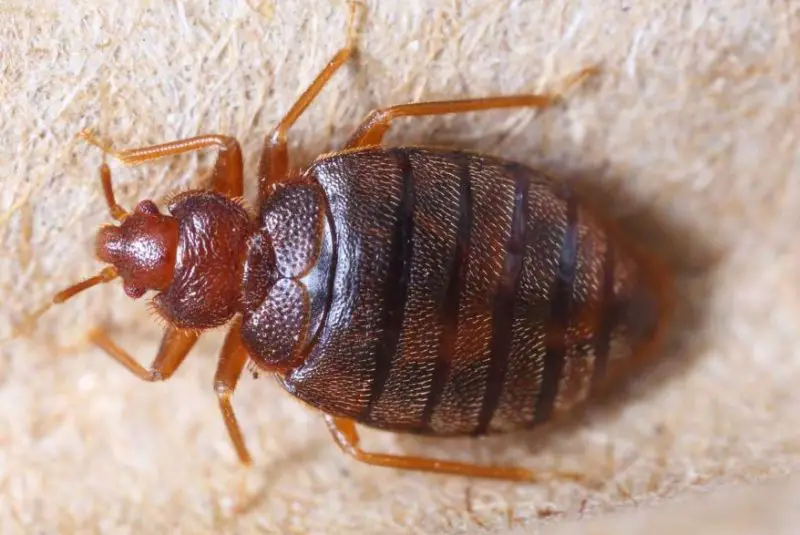
Bed Bugs are small, reddish-brown insects that feed on human blood, particularly at night. Although not known to transmit diseases, they cause itchy, inflamed bites and emotional distress due to their persistence and difficulty to eliminate. In North Carolina, infestations are common in hotels, apartments, and older homes.
Their bites typically appear in rows or clusters, often on exposed skin such as arms, legs, and the neck. Reactions vary—some individuals develop itchy welts, while others may show no visible signs. The bites can cause sleeplessness, anxiety, and allergic reactions in sensitive individuals.
Bed Bugs hide during the day in cracks, crevices, and mattress seams, emerging at night to feed. They are skilled hitchhikers, spreading easily through luggage, furniture, and clothing. Early detection is key to controlling infestations before they become severe.
Eradication requires a combination of professional pest treatment, thorough cleaning, and heat or chemical control methods. Washing bedding in hot water and vacuuming regularly helps reduce their numbers.
In North Carolina, Bed Bugs can infest any dwelling regardless of cleanliness. Regular inspection of sleeping areas and secondhand furniture is crucial for preventing infestations.
Southern Unstriped Scorpion (Vaejovis carolinianus)
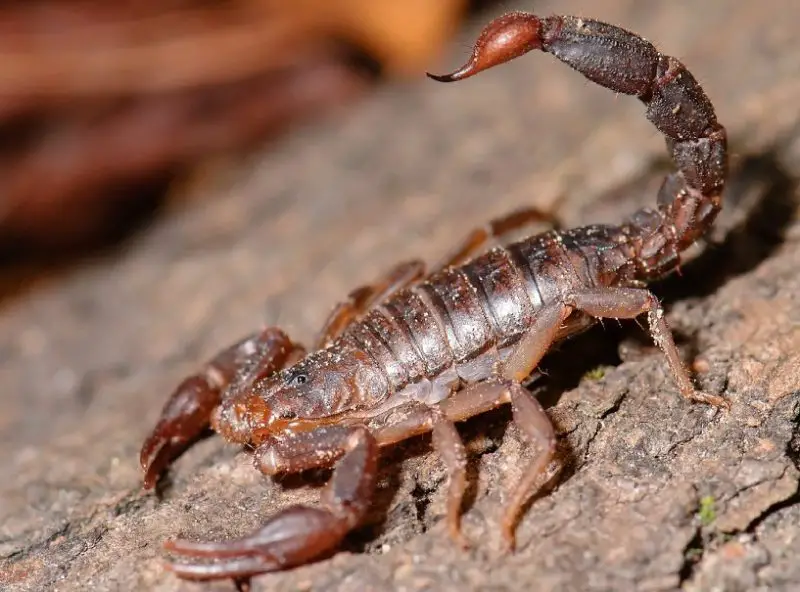
The Southern Unstriped Scorpion is the only native scorpion species found in North Carolina. It has a light brown to dark brown body and can grow up to two inches long. This nocturnal creature hides under rocks, logs, and leaf litter during the day, emerging at night to hunt insects and spiders.
Although venomous, the sting of this scorpion is generally mild and comparable to a bee sting. It causes sharp pain, swelling, redness, and occasionally numbness around the site. Severe reactions are rare but can occur in people allergic to venom.
Scorpions are shy by nature and sting only when provoked or accidentally pressed against the skin. They play an important ecological role by controlling insect populations. Their presence is more common in mountainous and western regions of North Carolina.
To avoid encounters, it’s best to shake out shoes, clothing, and bedding when staying in rustic cabins or rural areas. Wearing gloves when handling firewood or garden debris also helps reduce risks.
These scorpions thrive in moist forested areas and under rocks near riverbanks. Their reclusive habits make sightings uncommon, but their stings warrant caution when exploring their habitats.
Eastern Bark Centipede (Hemiscolopendra marginata)
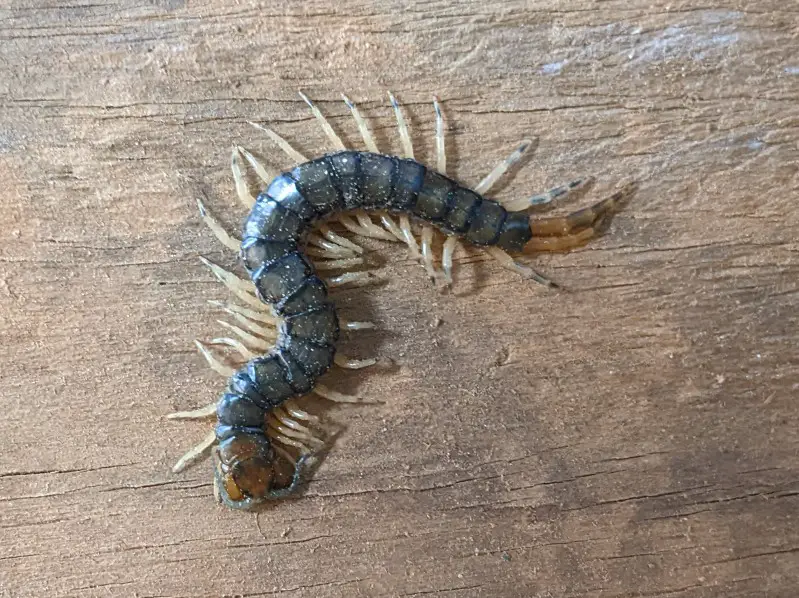
The Eastern Bark Centipede is one of the most recognizable centipedes in North Carolina, featuring a flattened, elongated body with numerous pairs of yellowish legs and a reddish-brown head. This nocturnal predator hides under bark, rocks, and leaf litter, emerging at night to hunt insects and spiders.
It possesses venomous fangs that it uses to immobilize prey. While its bite is not lethal to humans, it can cause localized pain, redness, and swelling similar to a bee sting. In rare cases, individuals may experience mild allergic reactions.
Centipedes are beneficial in the ecosystem, acting as natural pest controllers by feeding on other arthropods. However, their sudden appearance indoors can be alarming due to their fast movements and intimidating look.
If bitten, washing the area with soap and water and applying a cold compress can help ease discomfort. Medical attention is rarely necessary unless symptoms worsen. Keeping homes dry and sealing entry points can prevent centipedes from entering.
In North Carolina, the Eastern Bark Centipede is commonly found in wooded and damp environments. They are more active in warm months, particularly after heavy rains when they seek shelter indoors.

